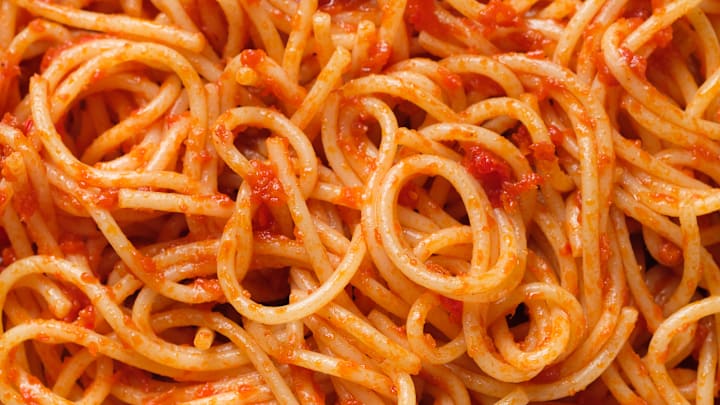Standing in the pasta aisle can be a surefire way to experience a decision-paralysis episode. There are hundreds of varieties, and to the untrained eye, it can feel a bit like choosing between “dusty rose” and “rose gold” paint swatches.
It can even be tough to distinguish the difference between three of the classics: linguine, fettuccine, and spaghetti. Below, we break down what sets these noodles apart, and why the distinction can make a big difference in your dish.
Linguine

Linguine, which means “little tongues” in Italian, is a long, flat noodle. Wider than spaghetti but narrower than fettuccine, it has a smooth, flat surface that pairs well with light, delicate sauces like pesto. It doesn’t overpower the ingredients it’s often paired with, which makes it a solid choice for dishes where you want your sauce to shine.
Fettuccine

Fettuccine’s name—which translates to “little ribbons”—tells us a lot about its shape. The pasta is broad and generally 1/4-inch thick; it’s about twice as wide as linguine. The wide, flat shape makes fettuccine a great vessel for heavier sauces, especially creamy ones like Alfredo or a meaty bolognese.
Spaghetti

Even if you aren’t familiar with linguine or fettuccine, spaghetti is a noodle you’ve certainly seen before. Spaghetti is the most popular pasta shape (and it’s also one of the easiest to industrially manufacture). Unlike fettuccine and linguine, this pasta is not flat, and is instead cylindrical. Its long, thin shape is perfect for twirling around on your fork. Because it lacks the thickness of broader shapes like fettuccine, spaghetti is best paired with lighter sauces like marinara, carbonara, or even a simple combination of garlic and olive oil.
How to Choose the Right Pasta Shape
Choosing between the three above pasta types boils down to the kind of dish you want to create, as the shape will affect the desired outcome. If you’re making a lighter sauce or looking for something to pair with veggies or seafood, consider linguine. But if you want a heavy, hearty sauce, then fettuccine will be a better choice. And if you’re looking for some classic Italian American comfort food, then you can’t go wrong with spaghetti and meatballs.
Read More About Pasta:
Have you got a Big Question you'd like us to answer? If so, let us know by emailing us at bigquestions@mentalfloss.com.
